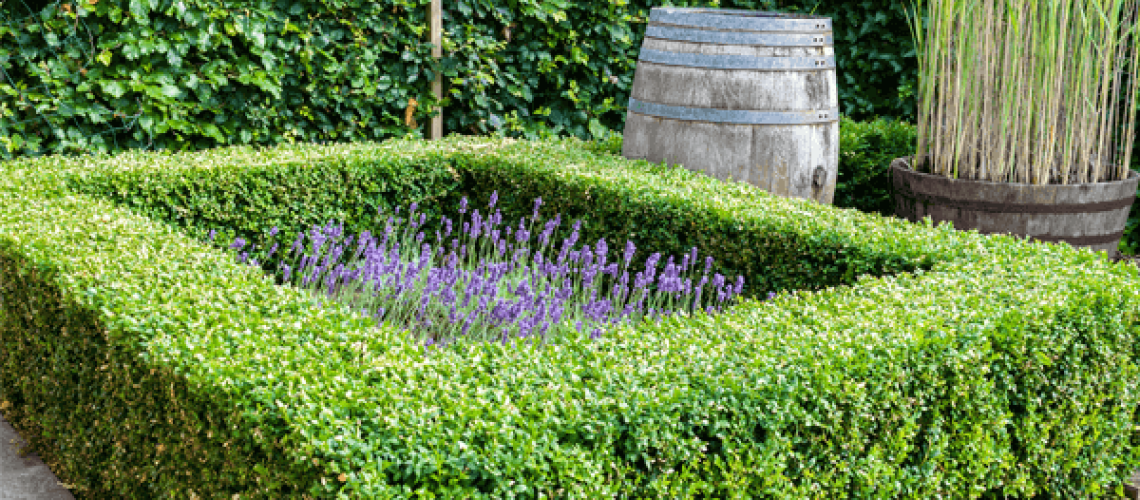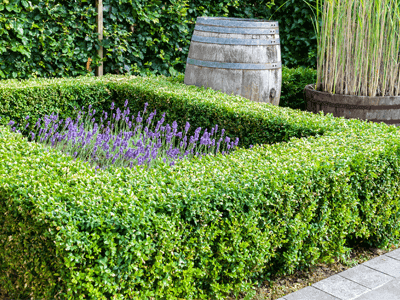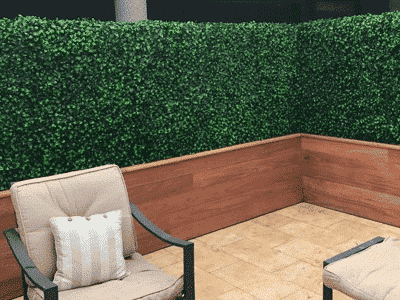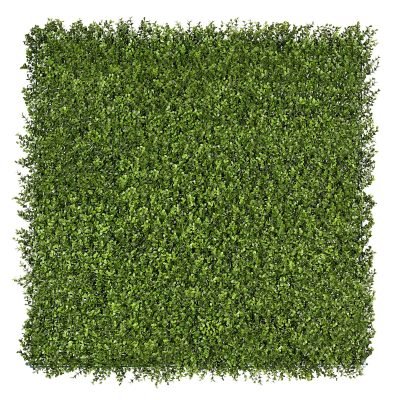
5 ways to make the most of a boxed hedge
Box hedging can be used around your home in many ways. It is a natural alternative to other forms of rigid fencing that brings with it advantages. They add to the functionality of your garden as well as the design.
Where to use boxed hedging

- Low border hedges: define an edge without blocking the view of other plants and areas with a short hedge. A boxed hedge can protect trees from foot traffic, outline a flowerbed area or add a decorative element.
- Add privacy to an area: block your neighbours view into your garden with a five-foot high privacy screen. It’s natural and helps cool the area as well.
- Mark out spaces: use a boxed hedge to identify the edges of different areas in your garden and create useful dividers.
- Hide unsightly areas: use hedging to hide ugly infrastructure and revamp ageing fences to streamline your overall garden design.
- Windbreak: natural hedges are a natural windbreak, especially in areas that are prone to windy conditions.
How to create your boxed hedge
Best plants for a boxed hedge
Boxwood: one of the most common plants used for a boxed hedge because it is very resilient. As an evergreen, it looks great all year round, and it’s easy to shape into your preferred form. It is available in many different varieties with some able to grow up to 20 feet in height. If you prefer a portable option though that you don’t need to wait for, consider purchasing a portable boxwood hedge.
Sawara False Cypress: also known as threadleaf false Cyprus,it is a slow growing variety. It will take around 20 years for it to grow to 6 feet so if you are looking for a tall hedge quickly, this is not the ideal plant for you. But its delicate leaves make an attractive hedge for your home.
Shrub roses: tough and much easier to grow than other varieties. You can prune them into the shape you desire, and you will end up with a garden border that looks and smells wonderful when in bloom. You can find more hedge plant ideas here.
How far apart do you plant a boxed hedge?
Generally, to work out how far apart you should plant for a standard hedge, decide how long you want it to be in metres and then multiply the length by five, this equals a spacing of 20 cm between each plant.
If your hedge will only be low, instead multiply the length by six and if your preference is for a tall, privacy hedge then only multiply by four.
Ideal planting conditions
Hedging plants are hardy and able to grow in most soil types including acid or alkaline, clay or sandy soils and shade or harsh sun. The only area where you are not advised to plant them is in waterlogged areas.
When first planted and until they are established, water them in well and in hot, dry conditions. Once they have grown enough they can endure drought conditions. If the plant leaves have a copper tinge, it means the hedge need nutrients and water.
How to shape your hedge
The idea is to grow your hedge to the desired height. To do this, minimise the amount of trimming that you do to encourage the maximum growth.
Instantaneous hedging
If you want a hedge immediately, you can choose to buy taller plants that will reduce the amount of time needed to reach the required height. Another option is to install lifelike, artificial hedging to create your hedge instantly.
Up next: Hanging plants – inside and out
Share this post
FEATURED PRODUCTS
-
Slimline Flowering White Artificial Green Wall Disc UV Resistant 50cm (Black Frame)
$199.95Original price was: $199.95.$174.95Current price is: $174.95. Inc GST ADD TO CART -
Luxury Deluxe Buxus (Bright) Hedge Panels UV Resistant 1m x 1m
$120.00Original price was: $120.00.$94.95Current price is: $94.95. Inc GST ADD TO CART -
Premium Natural Buxus Hedge Panels UV Resistant 1m x 1m
$120.00Original price was: $120.00.$79.95Current price is: $79.95. Inc GST ADD TO CART -
Variegated Boston Ivy Leaf Screen Green Wall Panel UV Resistant 1m X 1m (Dense Backing)
$99.95Original price was: $99.95.$65.00Current price is: $65.00. Inc GST ADD TO CART







